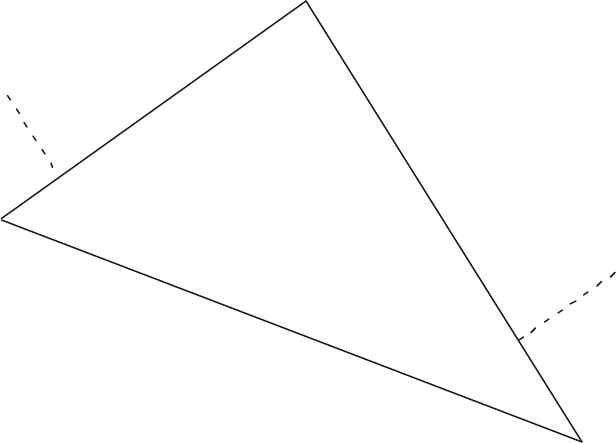Tsebelis G. Veto Players: How Political Institutions Work
Подождите немного. Документ загружается.


351
book. In fact, Proposition 3 is testing not simply the number of veto players but also their
ideological distances (see Proposition 1.4 of Chapter 1).
To test their predictions Keefer and Stasavage use a dataset including 78 countries over
20 years (for the 1975-94 period). Their dependent variable is inflation. Their independent
variables include central bank independence and a series of institutional variables. They use as
indicators of central bank independence both the “legal independence” measuring a series of
institutional indicators (see previous section) and turnover rates of the governors of the central
bank (a variable that is considered in the literature to reflect better the actual independence in
developing countries). Their institutional variables can be found in a database on political
institutions assembled by Beck, Clarke, Groff, Keefer and Walsh (1999). The variable “checks”
is “based on a formula which first counts the number of veto players, based on whether the
executive and legislative chamber(s) are controlled by different parties in presidential systems
and on the number of parties in the government coalition for parliamentary systems” (Keefer and
Stasavage (2000a: 19)). Polarization is measured “according to whether data sources indicated
parties (the four biggest ones) as having an economic orientation that was left, center or right…
the maximum difference between those entities that comprise the checks indicator explained
earlier. This maximum constitutes the political polarization measure” (Keefer and Stasavage
(2000a: 20)).
The reader can verify that the method used for the identification of institutional variables
is quite closely connected to the methods used in this book. The biggest difference is that
ideological positions of different veto players are not accurately identified, which is compensated
by their sample size. Keefer and Stasavage use interactive variables (CBI*veto players) in order
to test whether institutions matter. In their analysis they find that central bank independence has
352
no effect on inflation when it enters linearly (a result reported quite frequently in the literature),
but the coefficients of the interactive terms are negative and significant. They conclude: “More
concretely, in a parliamentary system with three party governing coalition… a one standard
deviation increase in legal central bank independence would be predicted to reduce annual rate of
inflation by approximately 20 percent. In contrast, in a parliamentary system with a single party
majority…the predicted change in inflation would be close to zero… This suggests an
explanation for Cukierman, Webb, and Neyapti’s finding that CBI is significantly and negatively
correlated with inflation in advanced industrial countries but not in developing countries:
developing countries, on average, have lower levels of checks and balances.” ((Keefer and
Stasavage (2000a: 23)). When the variable “political polarization” is included in the regressions
the results indicate that “checks and balances make the biggest contribution to central bank
effectiveness in more polarized societies” (Keefer and Stasavage (2000a: 33)).
CONCLUSIONS
In this chapter I developed a simple model, which generates the expectation that for any
given legislation, the independence of bureaucrats and the judiciary will be positively related to
the veto players (number and distances among them) that control the legislative process. This
model was then tested with existing data on judicial and bureaucratic independence.
At the theoretical level I made the distinction between countries with or without
constitutional courts. I argued that constitutional courts are additional veto players (since for all
practical purposes they cannot be legislatively overruled). However, because of the rules of
selection of these courts most of the time they are absorbed as veto players by the existing
political ones. The empirical findings about judges were based on four different indexes of
353
judicial independence generated by combinations of some 20 advanced industrialized countries,
and corroborated the expectations of the model of the first section.
With respect to bureaucracies I made the distinction between institutional and behavioral
independence in order to differentiate the argument presented in this book from the standard
arguments in the literature. I was able to identify a case (central bank activities) where the
expectations generated from my argument could be tested. Examining empirical evidence I
found out that central bank independence is correlated with both veto players and federalism. I
argued that most likely CBI is an institutional variable and as a consequence the theory presented
in this book cannot account for the reasons that central banks are more independent in countries
with many veto players. However, focusing on behavioral independence (in the fight against
inflation) I presented evidence that the expectations generated in the first part of this chapter are
strongly corroborated by a dataset covering a large number of countries.
354
TABLE 10.1
Data on Judicial Independence
COUNTRY JUDPOL
JUDREV
EXPERTS
STRICT
LIABILITY
DEC POL
veto
players DURATION
Australia 3
2.33
1
3 1 2 9
Austria 3 3 2
3 2 2 8
Belgium 3 3
3.5
3
3 1 3 4.8
Canada 3
2.33
2
3 1 1 8
Denmark 1 2 1
1 1 3 8
Finland 1 1 1
1 1 3 4.8
France 4 3
3.7
3
1 2 2 6.8
Germany 4 4
3.46
2
3 2 3 6.3
Greece 2 2 1 2 1
Iceland 1 2 1 1 3
Ireland 2 2 1
1 2 2 6.4
Israel 1
4.5
2
1 2 2 2.4
Italy 4 3
3.33
2
2 2 3 1.3
Japan 2
2.17
1
1 1 1 9.4
Luxembourg 1 1 3
1 1 2 4
New Zealand 1
2
1
1 1 1 6
Norway 1 2 1
1 2 2 4
Portugal 3 2 1 2 2
Spain 3 3
2
1
3 2 1 6
Sweden 2 2
2.5
1
1 2 2 4.2
Switzerland 2 1 3 1 3
Netherlands 2 1
4.2
2
1 1 3 2.5
United Kingdom 2 1
2.1
1
2 2 1 8
US 4
4.42
3
3 1 3 6.9

355
TABLE 10.2
Correlations between independent variables with and without Australia, Canada, Israel,
and the Netherlands
10.2A 10.2B
Judrev experts Strict
liab.
judpol judrev experts Strict
liab.
judpol
Judrev
(Lijphart)
1.000 1.000
Experts
.1261 1.000 .6446 1.000
Strict
liability
.4003 .7912 1.000 .5286 .9132 1.000
Judpol
(Alivizatos)
.8660 .3259 .5547 1.000 .8346 .7603 .6471 1.000
Correlations among different indexes are similar whether the four countries are included
or not, with few exceptions (noted in bold)

356
TABLE 10.3
Judicial Independence as a function of veto players
Independent
variable
Judpol
(Alivizatos)
Judrev
(Lijphart)
Strict
liability
Strict
liability
Strict
liability
Experts*** Experts*** Experts*** Judpol***
(Alivizatos)
veto players
(z or t)
1.292004**
(2.049)
.3405817
(1.060)
.6194123**
(1.686)
.6563661**
(1.779)
.5765635*
(1.454)
.8774138***
(4.415)
.7278529***
(3.107)
.8310000***
(4.297)
.6307947**
(2.095)
Dependent
variables
Polarization
(z or t)
3.259719***
(3.067)
.8772162**
(1.730)
-.5285295
(-0.954)
- - -.1133333
(-0.340)
- - 1.674503***
(3.703)
Decentralization
(z or t)
.9234209***
(2.543)
.9548024***
(3.172)
.3997773*
(1.360)
.3580203
(1.248)
- -.232069
(-1.279)
- - .5092715***
(2.626)
Duration
(z or t)
- - - - -.0469358
(-0.370)
- -.06612
(-0.807)
- -
#obs. 18 24 20 20 20 14 14 14 18
PseudoR
2
or
Adjust. R
2
0.3712 0.2291 0.1389 0.1167 0.0818 0.5643 0.5605 0.5733 0.5565
-Columns with the independent variable marked by *** use OLS estimations (t-statistic and adjusted R
2
).
-statistical significance determined by one-tailed tests (* significant at the .10, ** at the .05, and *** at the .01 level)
TABLE 10.4
Data on Central Bank Independence (from Bernhard (1998))
COUNTRY DEC
veto
players
Grilli et.
al. (1991)
Alesina
Summers
(1993)
Cukierman
(1991)
Total
Australia 3 2 0.6 0.5 0.31 0.47
Austria 3 2 0.6 0.625 0.58 0.6
Belgium 3 3 0.47 0.5 0.19 0.39
Canada 3 1 0.73 0.625 0.46 0.61
Denmark 1 3 0.53 0.625 0.47 0.54
France 1 2 0.47 0.5 0.28 0.42
Germany 3 3 0.87 1 0.66 0.84
Ireland 1 2 0.47 0.625 0.39 0.49
Italy 2 3 0.33 0.45 0.16 0.33
Japan 1 1 0.4 0.625 0.16 0.4
New Zealand 1 1 0.2 0.25 0.27 0.2
Norway 1 2 0.44 0.5 0.14 0.4
Spain 3 1 0.33 0.375 0.21 0.31
Sweden 1 2 0.44 0.5 0.27 0.4
Switzerland 3 3 0.8 1 0.68 0.83
Netherlands 1 3 0.67 0.625 0.42 0.57
United Kingdom 2 1 0.4 0.5 0.31 0.42
US 3 3 0.8 0.875 0.51 0.73

358
TABLE 10.5
Different measures of Central Bank Independence (CBI) as a function of veto players and
decentralization
CBI Grilli et.
al.(1991)
Alesina +
Summers
(1993)
Cukierman
(1991)
Total CBI
veto players
(t)
.0998795
**
(2.361)
.1175301**
(2.451)
.0703614*
(1.563)
.0976386
**
(2.379)
DECENTRALIZATION
(t)
.0862651
**
(2.377)
.0634337*
(1.542)
.0662048*
(1.715)
.0727952
**
(2.067)
N 18 18
18
18
Adj-R
2
0.3958 0.3115
0.2018
0.3612

359
FIGURE 10.1
1
2
3
J
J'
K
K'
L1
L2
S
E
L
E
C
T
I
O
N
O
F
A
P
O
L
I
C
Y
W
I
T
H
I
N
T
H
E
C
O
R
E
BY FIRST MOVER (BUREAUCRACY OR JUDICIARY)
First mover outside core (J or K) selects
closest point inside core (J' or K');
First mover inside core (L1 or L2) selects
own ideal point.
360
CHAPTER 11: VETO PLAYER ANALYSIS OF EU INSTITUTIONS
The European Community fascinates observers and scholars because it is a unique object
of study. Because the institutional structure of the EU is new, a series of neologisms have been
invented to describe it. It is "neither a state nor an international organization" (Sbragia (1992:
257)); "less than a Federation, more than a Regime" (W. Wallace (1983: 403)); "stuck between
sovereignty and integration" (W. Wallace (1982: 67)); a "part formed political system." (H.
Wallace (1989: 205); "institutionalized Intergovernmentalism in a supranational organization"
(Cameron (1992: 66)); the "middle ground between the cooperation of existing nations and the
breaking of a new one" (Scharpf (1988: 242)). Some scholars have even seen advantages in the
situation: Sbragia (1992: 258) approvingly quotes Krislov, Ehlermann, and Weiler claiming:
"The absence of a clear model, for one thing, makes ad hoc analogies more appropriate and
justifiable. If one may not specify what are clear analogies, less clear ones may be appropriate."
In this chapter instead of using (appropriate or inappropriate) analogies, I apply the veto
players theory and examine the logic and the outcomes of decision making generated by the
different legislative procedures adopted in successive treaties, and compare my conclusions with
other institutional analyses. As a result, this chapter has three important characteristics: first, it
studies several different institutional structures that prevail in the same territory; second, it
advances the application of the veto players theory, because the EU institutions are quite
complex: they involve three legislative institutions, each one of them deciding by different
formal or actual majorities, and the right to set the agenda sometimes includes restrictions,
sometimes is shared, and sometimes shifts among actors; third, because the study of EU
institutions and policies has progressed further than case studies, the predictions of different
theories are sharper, and the data collected enable comparisons on relatively solid basis. In short,
this chapter will make comparisons across different institutional settings (that involve the same
geographic area), will push theory to cover more complicated institutions, and will use empirical
tests to cooroborate more detailed empirical predictions than any of the previous chapters.
